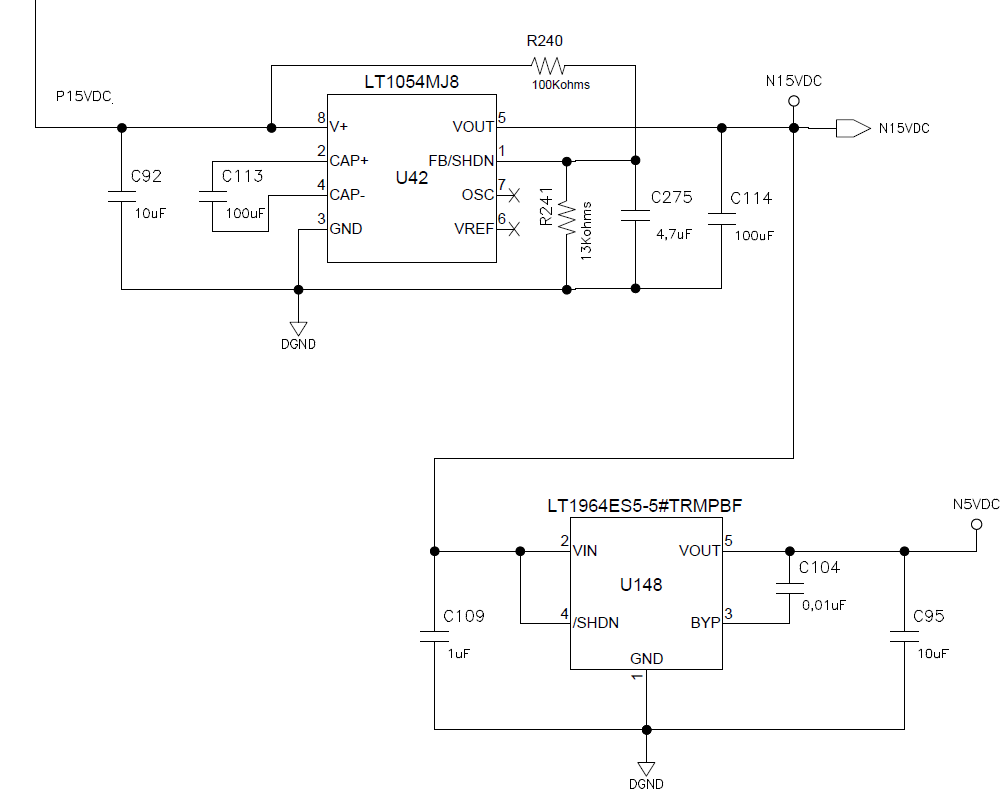Other Parts Discussed in Thread: OPA192,
Hello,
I have had a repetitive problem similar as posted here https://e2e.ti.com/support/power-management/f/196/t/706932?tisearch=e2e-sitesearch&keymatch=LT1054
In my design, we convert from a 15VDC power bus generated from a DC/DC converter to -15VDC with the LT1054. The load are several op-amps and other integrated circuits which have dual supply (15VDC and -15VDC), but the -15V total consumption is not greater than 34mA when we are working in normal operation. The majority of the circuit is conformed by the OPA192 model, and we have not any microcontroller nor digital circuit.
The principal problem with the LT1054 is that we had to debug so many PCBs because it fails at startup, supplying a Vout=0.6-0.7V. The architecture which we used is shown below.
(All the capacitors are SMD ceramic models)
In order to fix it, we have had to replace the LT1054, or in the worst cases, disconnect or replace some op-amps from the load. We have so many suspections about this:
-We could have an startup current from the load which could cause the fail. In order to fix it, we tried the architecture using the FB/SHDN pin, but we are not sure if is correct and what are the limitations to it, because it doesn't work always. We have tested changing the capacitor value in order to start the LT1054 later, but it doesn't work.
-Any of the op-amps from the load is forcing a positive voltage in the N15VDC somehow, which as said in the datasheet, is not recomendable. In one hand, there are a bunch of PCBs which are working with this design, so we doubt that this could be the real problem because we think it doesn't depends on the component tolerances, but in the other hand, the actual implementation doesn't allow us to implement the transistor solution showed in the datasheet, so we couldn't check that...
-There are some issues with the DC/DC converters (noise or disturbances) which affects the LT1054. Our 15VDC converter is implemented as shown below:
But in the P28VDC line there are others DCDC converters in order to supply other parts of the circuit. In our debugging adventure, we have tested that disconnecting some of them affects positively to the LT1054, but unfortunately, they are also needed.
We have some worries about this, because although we can't identify the exact problem, we fix it somehow. Any aclaration from your side will lighten us in our journey, so we thank you in advance.




